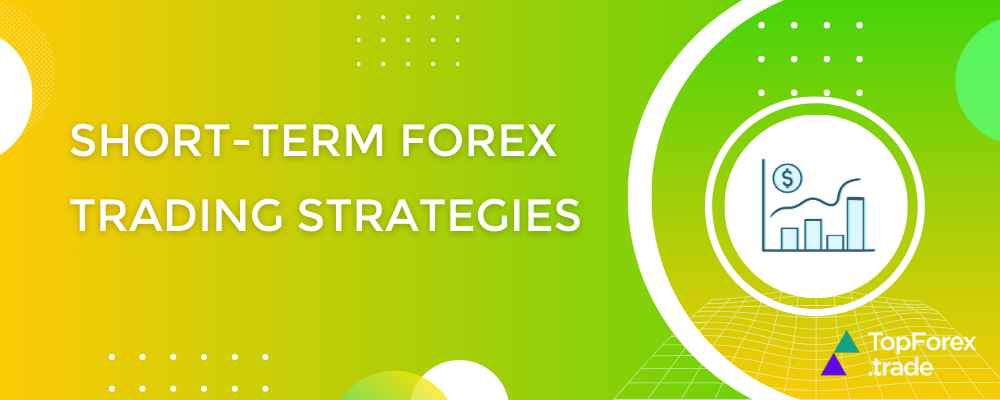Master the 5-minute Forex strategy: quick trades, big opportunities

For traders with limited time but a sharp eye for market movements, the 5-minute Forex trading strategy offers an exciting way to profit from quick price shifts. By focusing on short timeframes, this approach allows you to capitalize on micro-movements across various instruments, including currency pairs, commodities, indices, and Cryptocurrencies.
In this guide, we’ll explore how to effectively trade these assets using key indicators and smart risk management, helping you build consistent profits with minimal time investment.
Short-term FX trading secrets

The 5-minute forex strategy focuses on quick, precise trades, capturing small price movements in forex, commodities, indices, and crypto. It relies on solid strategies, technical analysis, and disciplined risk management.
Strategies for 5-minute FX and other instruments trading
Scalping:
- How it works: Scalping involves making rapid trades that capitalize on small price changes, often just a few pips. Scalpers aim for quick entries and exits, sometimes holding trades for just a few seconds or minutes. The idea is to accumulate small profits over time, which can add up.
- Example: Currency pair: EUR/USD. Action: The pair is moving within a narrow range of 1.1000–1.1005. A trader using a 1-minute chart notices a slight pullback to 1.1000 and anticipates a return to 1.1005. The trader enters a buy position, aiming for a 5-pip profit (from 1.1000 to 1.1005) and sets a tight stop-loss at 1.0997 to limit risk. This trade takes only a few seconds to execute, and the trader collects a smallprofit.
Momentum trading:
- How it works: Momentum trading focuses on capturing quick profits when a strong price movement is already underway. Traders use indicators to confirm the strength of a trend and enter trades in the direction of the price movement.
- Example: Instrument: gold. Action: After the release of positive inflation data, gold prices begin to surge. The trader uses the Moving Average Convergence Divergence (MACD) indicator, which shows a clear bullish crossover (MACD line crossing above the signal line). This signals strong upward momentum, so the trader enters a long position at $1,950 and sets a stop-loss at $1,945 (a 0.5% risk), with a take-profit target of $1,960, which is a reasonable price point based on recent volatility.
→More about how to use Moving Averages in CFD trading.
Breakout trading:
- How it works: Breakout trading involves identifying key support or resistance levels and entering a trade when the price breaks through these levels. Breakouts are often accompanied by an increase in volume, signaling that the price may continue moving in the breakout direction.
- Example: Instrument: Bitcoin. Action: Bitcoin has been consolidating around the $28,000 mark. A trader watches for a breakout above this level, which is confirmed by a surge in volume and a strong candle closing above $28,000. The trader enters long at $28,050, places a stop-loss at $27,900 (below the breakout point), and targets a $28,500 take-profit based on the previous price action and volatility.
Instruments suitable for 5-minute trading
Forex pairs:
- Why: Forex pairs are extremely liquid and have tight spreads, making them ideal for short-term, high-frequency trading strategies like scalping. Popular pairs like EUR/USD, GBP/USD, and USD/JPY are especially suited for 5-minute trades because they often show regular micro-movements throughout the trading day.
- Example: Instrument: GBP/USD. Setup: Using Bollinger Bands on the 5-minute chart, the trader observes that the price touches the lower band at 1.2400, suggesting that the pair may be oversold and likely to reverse. The trader waits for a bullish candlestick pattern to form and enters a buy position at 1.2400, setting a stop-loss at 1.2380 and a take-profit at 1.2430.
Commodities (gold, oil):
- Why: Commodities like gold and oil are highly responsive to news events and global market trends, which can lead to sharp price movements in short timeframes. The added volatility can create excellent opportunities for quick profits.
- Example: Instrument: Gold. Setup: Following a news release that suggests rising inflation, gold’s price jumps. A trader uses the Relative Strength Index (RSI) to spot that the price has dropped below the oversold level (RSI < 30) at $1,750. After confirming the reversal with a candlestick pattern, the trader enters long at $1,750, with a stop-loss at $1,745 and a target price of $1,760.
Indices (US30, NASDAQ):
- Why: Indices such as the US30 (Dow Jones) and NASDAQ are popular in 5-minute trading because of their liquidity and tendency to display trending behavior, especially during the opening or closing hours of the stock market.
- Example: Instrument: NASDAQ. Setup: On a 5-minute chart, the trader spots a bullish engulfing pattern and a MACD crossover, signaling a strong upward trend. The trader enters a long trade at 13,500, with a stop-loss at 13,470 (30 points away) and a take-profit at 13,550.
Cryptocurrencies (Bitcoin, Ethereum):
- Why: Cryptocurrencies are highly volatile, which creates ample opportunities for quick gains. Due to their high volatility, they are perfect for breakout or momentum strategies.
- Example: Instrument: Ethereum. Setup: Ethereum has been consolidating at $1,750. The price breaks through this level with rising volume, signaling a potential breakout. The trader enters long at $1,760, with a stop-loss at $1,740 and a take-profit target of $1,780 based on recent market conditions.
Indicators and tools for 5-minute trading
Exponential Moving Averages (EMA):
- How to use: The EMA reacts quicker to price changes compared to the simple moving average (SMA), making it ideal for fast-paced 5-minute trades. Using shorter periods (e.g., 9 EMA and 21 EMA) can help traders spot trends and entry points more effectively.
- Example: Instrument: USD/JPY. Setup: When the 9 EMA crosses above the 21 EMA at 147.00, it signals a potential buy opportunity. The trader enters long and places a stop-loss at 146.80 (20 pips below the entry) to manage risk.
Relative Strength Index (RSI):
- How to use: The RSI indicates whether a market is overbought or oversold, helping traders spot potential reversals. It can also confirm strong price movements.
- Example: Instrument: Crude oil. Setup: Crude oil’s RSI drops below 30 at $75, indicating oversold conditions. The trader enters long at $75.10, places a stop-loss at $74.50, and sets a target at $76.
Bollinger Bands:
- How to use: Bollinger Bands show price volatility. When price touches the upper or lower bands, it suggests overbought or oversold conditions.
- Example: Instrument: EUR/USD. Setup: The price touches the lower Bollinger Band at 1.0950. The trader waits for a reversal candle to form and enters long at 1.0950, with a stop-loss at 1.0940 and a target at the middle band (1.0970).
Moving Average Convergence Divergence (MACD):
- How to use: The MACD shows momentum by comparing two EMAs. A bullish signal occurs when the MACD line crosses above the signal line, and a bearish signal occurs when the MACD line crosses below the signal line.
- Example: Instrument: NASDAQ. Setup: When the MACD crosses above the signal line at 13,400, it indicates bullish momentum. The trader enters long at 13,400, setting a stop-loss at 13,370.
Average True Range (ATR):
- How to use: ATR measures volatility and helps traders set appropriate stop-loss and take-profit levels. A higher ATR value suggests greater volatility, which allows for wider stop-losses.
- Example: Instrument: Bitcoin. Setup: Bitcoin has an ATR of $200. A trader enters at $29,000 and sets a stop-loss at $28,800 and a target at $29,400, respecting the average volatility.
Risk management tools for 5-minute trades
Stop-loss orders:
- Why it’s important: Stop-loss orders automatically close a trade when the price moves a certain distance in an unfavorable direction. This is crucial for protecting capital in fast-moving markets.
→Read about Forex risk management tools: automatic trading with popular market orders.
Position sizing:
- Why it’s important: Traders should calculate the appropriate position size based on their account size and the risk tolerance per trade. Using too large a position increases the risk of significant losses.
Risk-to-reward ratio:
- Why it’s important: A risk-to-reward ratio of 1:2 (risking $1 to make $2) is commonly used in day trading. This ensures that even if a trader loses more than they win, they can still be profitable in the long run.
The 5-minute Forex trading: case study scenario

Objective: To implement the 5-minute trading strategy across different financial instruments (e.g., EUR/USD, Gold, NASDAQ, Bitcoin) using technical indicators, risk management tools, and advised trading practices.
Scalping Strategy:
- Instrument: EUR/USD
- Action: Utilizing the 5-minute chart, the trader applies Bollinger Bands and RSI to spot potential entry points. When the EUR/USD price touches the lower Bollinger Band (suggesting oversold conditions) while the RSI reading is below 30, this signals a possible reversal.
- Entry point: The trader buys at 1.0850.
- Exit point: Sets a target of 1.0870 (20 pips profit) with a stop-loss at 1.0840 (10 pips loss).
- Outcome: The trade is executed and the position is closed after the price hits 1.0870. This strategy produces a 2:1 risk-reward ratio, generating a quick 20-pip profit.
Momentum trading:
- Instrument: Gold
- Action: After a strong non-farm payrolls report indicating rising inflation, the trader observes Gold’s 5-minute chart. Using the MACD indicator, the trader sees a bullish crossover pattern (MACD line crossing above the signal line).
- Entry point: They enter a long position at $1,950.
- Exit point: Setting a stop-loss at $1,945 and a take-profit at $1,960 (100 pips gain).
- Outcome: The trade is successful; Gold rises to $1,960, hitting the take-profit goal.
Breakout strategy:
- Instrument: NASDAQ
- Action: The trader spots a consolidation pattern on the 5-minute chart, with support around 13,400 and resistance at 13,450.
- Entry point: The breakout occurs above 13,450 with increased trading volume. The trader goes long.
- Exit point: The stop-loss is placed at 13,420, and the take-profit target is set at 13,550.
- Outcome: The breakout confirms strength, and NASDAQ reaches 13,550, yielding a 100-pip profit.
Crypto Momentum Trading:
- Instrument: Bitcoin
- Action: The trader monitors Bitcoin’s 5-minute chart and identifies a strong bullish trend.
- Entry point: The MACD indicator shows a crossover point with a significant volume increase.
- Exit point: They enter a long position at $29,000 with a stop-loss at $28,800 and a take-profit target at $29,400.
- Outcome: The trade hits the take-profit target at $29,400, resulting in a 40-pip profit.
Indicators and tools used:
- Bollinger Bands and RSI: By combining these indicators, traders can assess price volatility and potential reversal points. For example, on EUR/USD, Bollinger Bands help identify oversold conditions, while RSI helps confirm a potential reversal.
- MACD (Moving Average Convergence Divergence): This tool was used on Gold and Bitcoin to spot momentum changes and confirm strong trends.
- Exponential Moving Averages (EMA): Used on the EUR/USD and NASDAQ charts to confirm trends and provide entry signals.
- ATR (Average True Range): Aiding in determining volatility, helping traders set appropriate stop-loss and take-profit levels.
- Volume analysis: Monitoring volume was essential to confirm breakouts and directional movements across all instruments.
Risk management tools:
- Stop-loss orders: Used consistently to limit losses in trades (e.g. NASDAQ and Gold trades). Ensures that if the trade doesn’t go as planned, losses are controlled and limited to a manageable percentage of the trading account.
- Position sizing: The trader allocated 1% of their trading capital to each 5-minute trade, which helped to limit exposure and manage risk across the trading day.
- Risk-reward ratio: Trades were consistently set at a 2:1 risk-reward ratio, ensuring that even if a majority of trades were losses, the overall strategy would still be profitable.
The best FX brokers for small-scale, high-frequency trading
After mastering the strategies and techniques of the 5-minute forex trader, the next step is choosing the right broker to execute your micro trades efficiently. In this section, we highlight the best FX brokers for small-scale, high-frequency trading, offering fast execution, low spreads, and flexible account options to support your quick, high-turnover strategies.
Pro tip: Before investing real money, practice on demo accounts of the best brokers!
XTB FX trading
XTB is a globally recognized broker, trusted by traders in over 190 countries for its strong focus on security and transparency. Regulated by leading authorities such as the FCA, CySEC, and KNF, it ensures a reliable trading environment. XTB offers cutting-edge platforms like xStation and MetaTrader 4, making it simple to trade a diverse range of currency pairs. Whether you’re just starting or a seasoned trader, XTB’s flexible account options, including Standard and swap-free accounts, are designed to suit different trading needs and preferences.
BlackBull FX trading
BlackBull Markets is a trusted forex and CFD broker known for delivering a seamless trading experience through its advanced MT4 and MT5 platforms. Packed with robust analytical tools, these platforms empower traders to craft and execute effective strategies. With a focus on user experience, BlackBull Markets stands out for its excellent customer support and educational resources, making it a great choice for both beginners and seasoned traders. Committed to security and transparency, the broker offers a reliable and supportive environment for traders looking to enhance their skills and navigate the dynamic forex market.
Exness FX trading
Exness is a top choice for traders, offering a diverse range of instruments, including currency pairs, commodities, indices, cryptocurrencies, and CFDs. Regulated by the FCA in the UK and CySEC in Cyprus, it provides a secure and trustworthy trading environment. With competitive spreads on both Standard and Professional accounts, Exness accommodates a variety of trading styles. The broker also delivers reliable support through email, live chat, and phone, and features advanced trading platforms like MetaTrader 4 (MT4) and MetaTrader 5 (MT5) for a seamless and feature-packed experience. Whether you’re a beginner or a seasoned trader, Exness is a solid platform to consider.
OANDA FX trading
OANDA is a trusted online broker recognized for its reliability and outstanding customer service. It offers a secure trading environment with competitive spreads and flexible leverage options, making it suitable for a variety of trading strategies and risk preferences. Traders can choose between the popular MetaTrader 4 platform or OANDA’s proprietary platform, OANDA Trade, which includes advanced charting tools and support for expert advisors to facilitate technical analysis and algorithmic trading. Additionally, OANDA enhances the trading experience with valuable resources such as daily and weekly market analysis, Forex news, and expert insights.
XM FX trading
Founded in 2009 and based in Belize, XM Group is a trusted Forex and CFD broker with a low minimum deposit requirement. Regulated by top authorities like CySEC and the FCA, it offers a secure trading environment with two-step authentication. XM provides access to a variety of assets, including currency pairs, stocks, commodities, and indices, supporting both beginners and experienced traders with user-friendly platforms, competitive spreads, and multiple account options.
Related articles:
The 5-minute Forex trading - FAQ